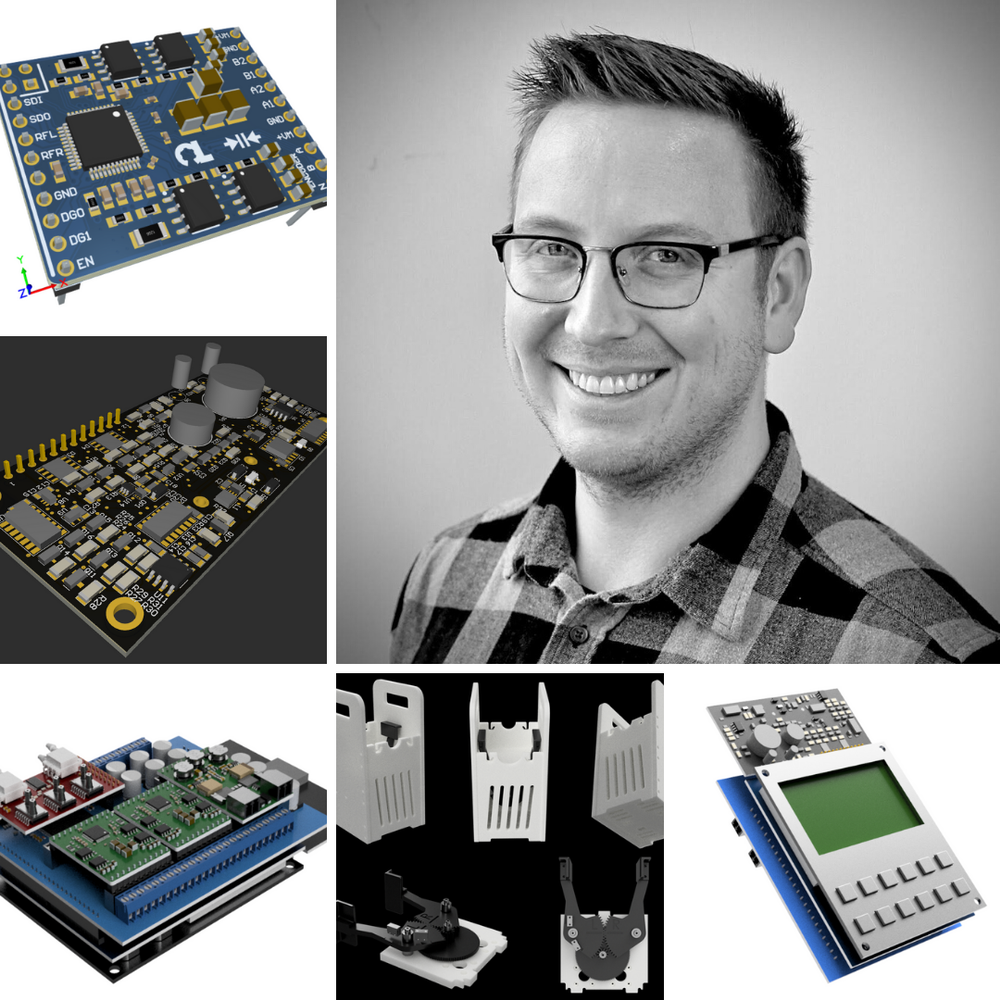PCEC News
Engineering Alum Works on Emergency Ventilator for COVID-19 Patients
May 14, 2020

Dugan Karnazes graduated from Grand Valley State University with a degree in Electrical Engineering in 2017 and founded Velocity Research, a Grand Rapids-based engineering and product development company focused on electronics, embedded firmware, and mechanical design. When coronavirus hit, Velocity Research dedicated design and engineering support in response to COVID-19 free of charge.
Dugan wanted to do more to help, so he connected with a group based in Ireland called the Open Source Ventilator (OSV) Project that was working on an open source project to create a ventilator that could be 3D printed. When the OSV Project began there were five members. Within one month the group membership grew to over 3,000 individuals from around the world working on 15 different designs in parallel. Dugan quickly realized that the project had too many volunteers working on designs and offered to assist instead by coordinating corporate sponsorships for the work and expanding the impact of the project in West Michigan. Altium, a company that provides PC-based electronics design software for engineers, quickly agreed to help by providing licenses and access to their cloud to help the global team coordinate their work.
Design of the ventilator has since shifted from a product that can be 3D printed to a product that could be mass-produced at low cost. Purchase of a typical ventilator usually costs between $25,000 to $50,000. The current prototype of the OSV Project ventilator would cost approximately $500. The significant cost difference can be attributed to the FDA emergency authorization and to the ventilator’s design which incorporates inexpensive bag valve masks (BVM) which are already readily available at hospitals. The FDA emergency authorization allowed the team to quickly complete the new device review process and save thousands of dollars as compared to typical product review fees. The ventilator is designed to squeeze a BVM, provide pressure and flow monitoring, allow customization to meet different parameters for unique patient needs through a user interface, and also contains a backup power supply and emergency alarm.
“The whole project has been a giant West Michigan collaboration,” Dugan said. Currently, the mechanical component of the ventilator is complete and the electronic board is being prototyped. Spectrum Health provided feedback on the device, and Ford and GM collaborated with the OSV team in moving ventilator designs through the FDA approval process. CERN is conducting environmental and safety tests. If the ventilator passes, then it will be available for production. Two medical manufacturers in Kalamazoo, Michigan, Keystone and Techna, are interested in conducting production runs. Dugan indicated that special thanks are owed to 3DC19, Amway, Gentex, Ford, Worthington, CircuitHub, and DigiKey and to all of the individuals and businesses who have assisted with the ventilator, with particular gratitude to: Jeff Robinson at Hybrid Machine for helping with building; Chad and Ethan Potinksi for the bulk of the mechanical design; Eric Binnendyk at Hybrid Machine; Ross Miller at Velocity Research; Greg Nowak and Russ Ramsey at Dornerworks; Corey Bremmer, Corbin Beyer, Howard Paul, and Tessa Shaffer at Array of Engineers; and Nadim Conti at CERN.
The final product will be an emergency ventilator that can be operated for 14 days before requiring refurbishing. It was designed specifically to respond to a critical shortage of ventilators needed to care for patients ill with COVID-19. “If it never needs to go into production, that would be great,” said Dugan. However, if the need does arise, the final design is freely available to anyone in the world. Already, professionals in Mexico, Costa Rica, and Argentina have expressed interest.
“Engineers solve problems. They always have and they always will,” said Dugan. His advice to future engineers: “In order to have a fulfilling career, find the field of engineering that has a problem that you want to solve.”
The Open Source Ventilator Project has been featured by FOX17 and Altium.
Visit the GVSU Padnos College of Engineering & Computing website.

